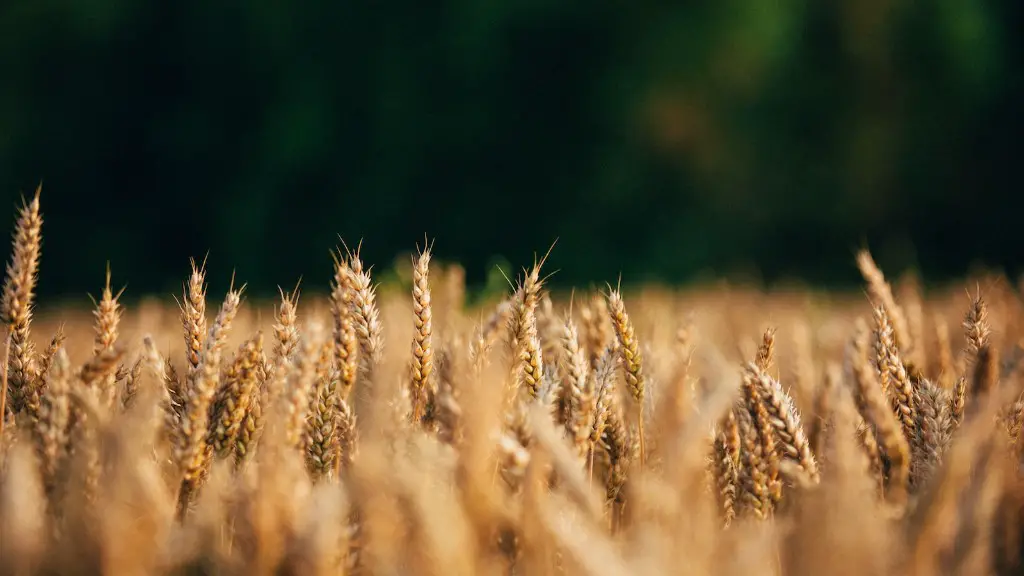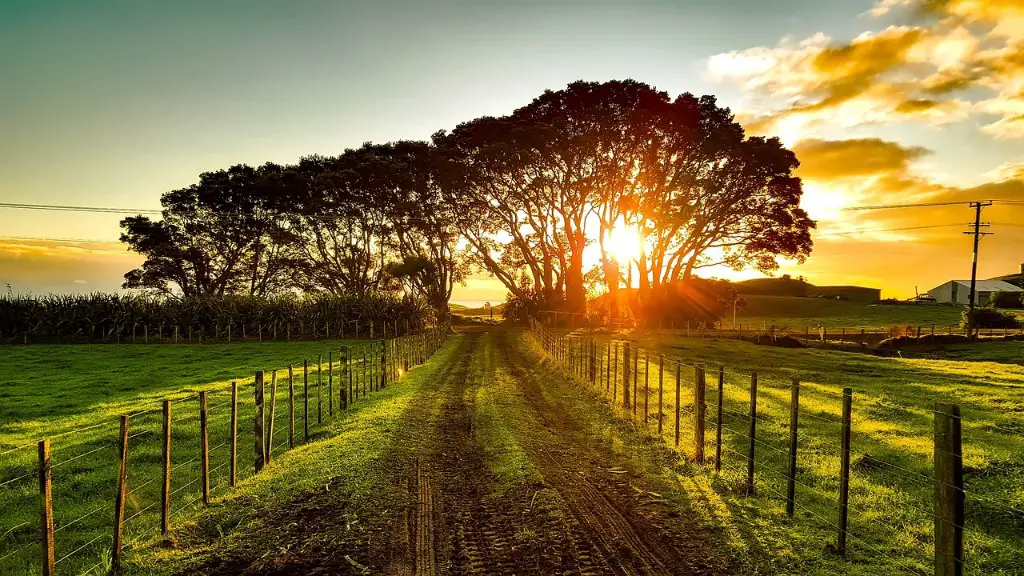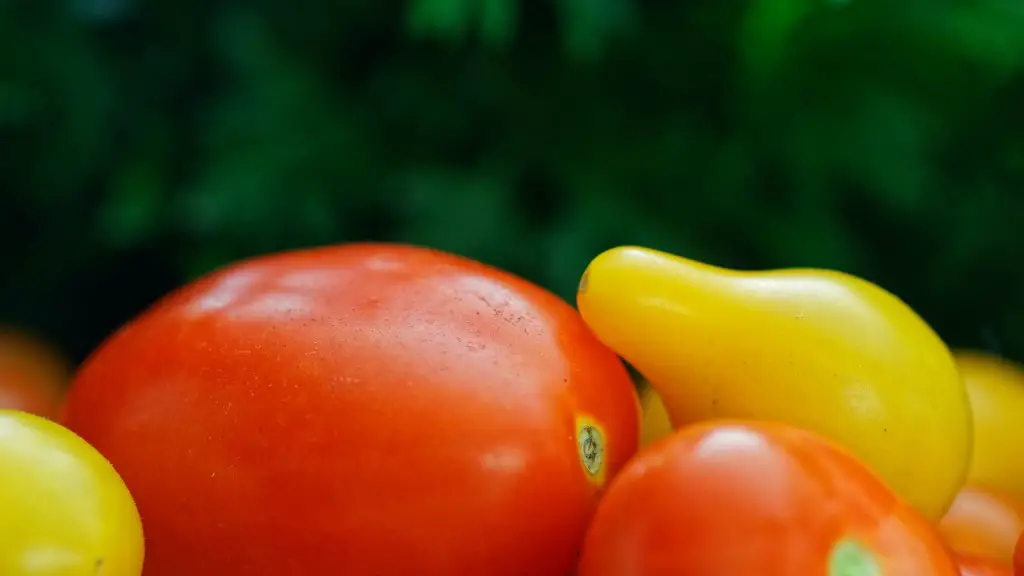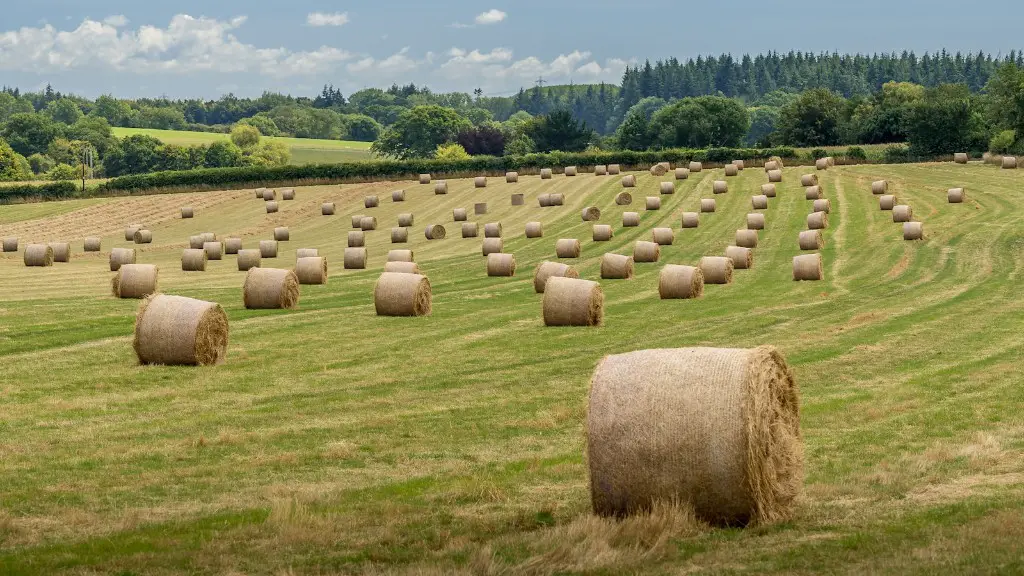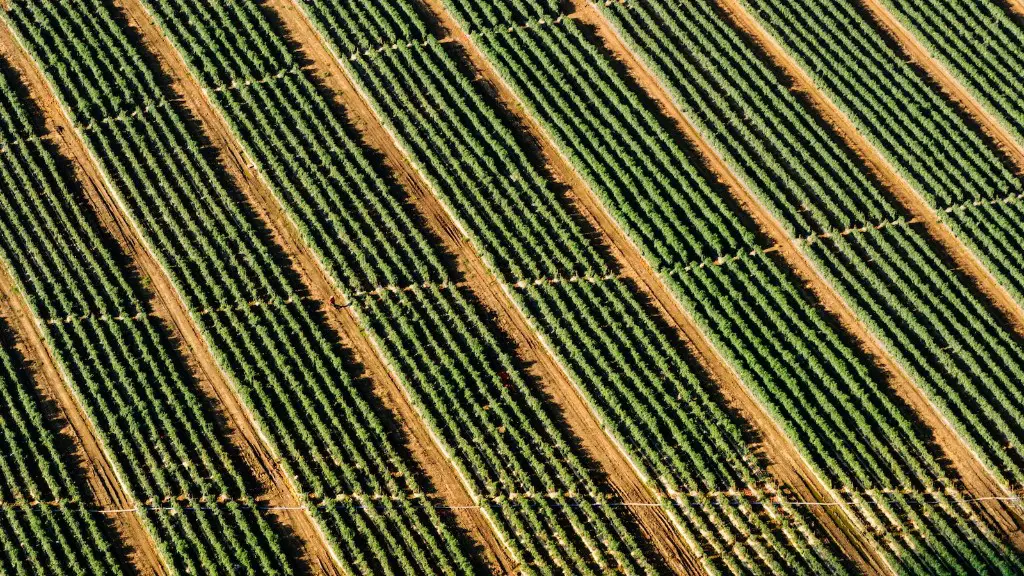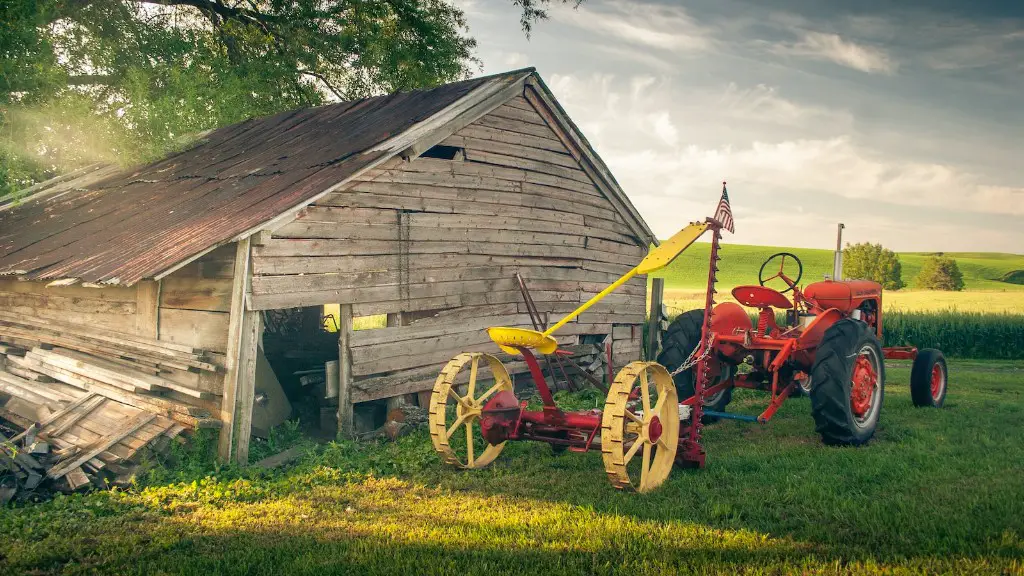Agroforestry is a land management practice that involves growing trees and shrubs alongside crops or pastureland. This practice can help to improve soil quality, protect against erosion, and provide a habitat for wildlife. Additionally, agroforestry can provide economic benefits by producing timber, fruits, and nuts, among other products.
Agroforestry is a land management system that integrates trees and shrubs into traditional farming and ranching practices. It combines the best attributes of both forestry and agriculture, and can be adapted to a wide range of landscapes and climates.
What is an example of agroforestry?
Windbreaks are lines of trees or shrubs planted in such a way as to provide protection from the wind. They can be used to protect crops, homes, and other structures from wind damage, and to create microclimates that are more hospitable to plants and animals.
Riparian forest buffers are areas of forested land that are adjacent to streams, rivers, or other bodies of water. They help to protect water quality by filtering pollutants and stabilizing banks.
Alley cropping is a type of agroforestry in which crops are grown in rows between lines of trees. This practice can increase crop yields while also providing environmental benefits such as windbreaks, shade, and improved soil fertility.
Silvopasture is a type of agroforestry in which trees are grown in conjunction with pastureland for grazing animals. This practice can improve the productivity of both the trees and the pasture, while also providing environmental benefits such as windbreaks, shade, and improved soil fertility.
Forest farming is the intentional cultivation of forest products such as timber, mushrooms, and medicinal plants. This practice can provide economic and environmental benefits by providing a source of income from the sale of these products, while also helping to conserve and restore
Agroforestry is a land management practice that involves growing trees in combination with other crops or animals on the same piece of land. This practice can help improve water quality and air quality, soil health, and wildlife habitat. Additionally, agroforestry practices can support agricultural production by providing food, fiber, and energy.
What are two benefits of agroforestry
Protecting soil, animals, crops, and homes from extreme weather is important to improve water quality and produce jobs and income. Producing products like food, fiber, bioenergy, wood, floral and medicinal/botanical products can also help improve the quality of life for people and communities.
You can grow a variety of crops under trees, including hay, wheat, soybeans, and corn. You can also grow many vegetables and specialty crops, such as St. John’s Wort, a popular medicinal herb. Consider planting a ground cover, such as a grass-legume mix, under the tree rows in a strip extending to the width of the tree crowns. This will help protect the tree roots and improve the soil.
What are the disadvantages of agroforestry?
Agroforestry is a great way to sustainably produce food and fiber while also providing environmental benefits. However, one of the main disadvantages of agroforestry is that it can take a long time for trees and shrubs to mature and start providing these benefits. This can be a challenge for those who are trying to grow trees and shrubs for profit, as they may not see a return on their investment for many years.
Agroforestry is an important intervention that affects multiple sectors, but there is often a lack of coordination between these sectors. This can create gaps or adverse incentives that work against agroforestry.
What is agroforestry in simple words?
Agroforestry is a land use management system that involves the deliberate growing of trees and shrubs in combination with crops and/or livestock. The main goal of agroforestry is to create a more efficient and sustainable land use system that can provide a variety of benefits, including improved soil health, increased biodiversity, and improved economic conditions for farmers and ranchers.
Agroforestry is the practice of combining the management of annual crops and/or animals with trees. The most common agroforestry practice in India is the combination of trees with annual crops, such as the Flemingia-Toon tree-based system or the Pod Mahogany-based system.
The Flemingia-Toon system is the most common agroforestry system in India, and consists of growing Flemingia macrophylla (a nitrogen-fixing tree) and Toona ciliata (a timber tree) together with annual crops such as rice, maize, or millet. The system is highly productive, with the trees providing shade and nitrogen to the crops and the Toona ciliata providing timber.
The Pod Mahogany-based system consists of growing Afzelia quanzensis (a timber tree) and Jatropha curcas (an oil-producing tree) together with annual crops such as rice, maize, or millet. The system is less productive than the Flemingia-Toon system, but still provides benefits such as shade and nitrogen to the crops, and timber and oil to the farmers.
Neem (Azadirachta indica) is another tree
How much land do you need for agroforestry
Trees are an important part of the landscape and play a vital role in the ecosystem. They provide food and shelter for wildlife, and help to regulate the climate.
Farming activity can have a negative impact on the environment, causing soil erosion and habitat loss. Trees can help to mitigate these impacts by stabilising the soil and providing shelter for wildlife.
However, farming activity can also have a positive impact on the environment, for example by providing food and timber. Planting trees can help to create a more sustainable landscape, and provide an important source of income for farmers.
Trees are usually planted at wide spacing ranging 400-1,000 trees/ha, in order to accommodate farming activity. The minimum area for planting is 0.5 ha, with a tree-to-tree width of 20 m.
Agroforestry is the practice of combining trees and crops in the same space. In agroforesty systems, the trees are managed in a way that benefits the crops, with the overall goal of creating a more productive, sustainable, and resilient landscape.
There are many different types of agroforestry systems, but they all share a common goal: to increase productivity while also protecting and enhancing the environment.
Tropical and sub-tropical regions are particularly well suited to agroforestry because of the high density of plant and animal life, the diverse range of climates, and the large amount of land available for cultivation.
Agroforestry has the potential to transform the way we produce food, and has already begun to do so in many parts of the world. If more people adopt this practice, we could see a huge impact on global food security.
What are positive and negative effects of agroforestry?
Agroforestry is a type of land management that involves the integration of trees and crops in a single system. This practice can have a number of benefits, including improved biodiversity, improved wildlife habitats, increased animal health and welfare, and improved landscape aesthetics. However, agroforestry can also come with some drawbacks, including increased labour costs, complexity of work, and increased management costs.
Three basic types of agroforestry systems exist, based on technological level and economic development: subsistence, intermediate, and commercial.
Subsistence agroforestry systems are the most traditional and are usually found in developing countries with low levels of technological input and management. These systems are based on the family unit and are highly labour-intensive. The main objectives of subsistence agroforestry systems are to provide the family with food, fuel, and other basic necessities.
Intermediate agroforestry systems are found in developing countries that are in the process of economic development. The level of technology input and management is higher than in subsistence systems, but still relatively low. These systems are based on small farms, and the main objectives are to produce food and timber for sale.
Commercial agroforestry systems are found in developed countries with high levels of technological input and management. These systems are based on large farms and the main objective is to produce food, timber, and other products for sale.
Is agroforestry good for soil
Agroforestry plays an important role in promoting soil health. The practice of integrating trees and shrubs into annual cropping systems increases root diversity, which in turn feeds the living organisms within the soil. This helps to build a healthy soil ecosystem that is able to support plant growth and improve water and nutrient retention.
Agroforestry has the potential to increase average biodiversity by more than two-fold. Research has found significantly higher diversity of plants, insects and pollinators in agro-forested areas compared to conventional croplands.
The main benefit of agroforestry is that it creates a more diverse and complex landscape, which in turn provides homes and habitat for a greater variety of species. This increased biodiversity can provide a number of ecosystem services, such as improved pollination, pest control and soil health.
Agroforestry is a practice that is still in its infancy, but has great potential to help address the global challenge of biodiversity loss.
Is agroforestry sustainable farming?
Agroforestry is an important land management approach that can help landowners achieve their goals of productivity and profitability while also being good stewards of the environment. This results in healthy, sustainable agricultural systems that can be passed on to future generations.
Agroforestry can contribute to climate change adaptation and mitigation by reducing threats and enhancing agricultural landscape resiliency, facilitating species movement to more favorable conditions, sequestering carbon, and reducing greenhouse gas emissions.
Does agroforestry help with climate change
Agroforestry is a type of land management that combines trees and shrubs with traditional crops or livestock. This practice can help to combat climate change in three ways: by sequestering carbon in biomass and soils, reducing greenhouse gas emissions, and avoiding emissions through reduced fossil fuel and energy usage on farms.
sequestering carbon refers to the process of capturing and storing carbon dioxide from the atmosphere. This can be done through planting trees and shrubs, which act as a “sink” for carbon dioxide. By sequestering carbon, agroforestry can help to mitigate climate change.
Reducing greenhouse gas emissions can be achieved by using agroforestry practices that promote efficient use of resources, such as water and fertilizer. For example, alley cropping is a type of agroforestry that involves planting crops in between rows of trees. This practice can help to reduce fertilizer runoff, which can be a major source of greenhouse gas emissions.
Avoiding emissions through reduced fossil fuel and energy usage is another way that agroforestry can help to combat climate change. Agroforestry practices can help to reduce the need for energy-intensive activities, such as tilling and plowing. In addition, ag
Agroforestry is a land management system that combines trees with crops or livestock. This practice can improve the resiliency of agricultural systems and help mitigate the impacts of climate change. Agroforestry can also help to bridge the gap that often separates agriculture and forestry by building integrated systems that address both environmental and socio-economic objectives.
Final Words
Agroforestry is a type of land management that involves combining crops and trees together in an intentional way. There are many different ways to do this, but all agroforestry practices have two things in common: they intentionally mix trees and crops on the same piece of land, and they are managed as a system.
Agroforestry is the term used to describe the intentional incorporation of trees and shrubs into crop and livestock production systems. It combines the benefits of both forestry and agriculture, and can help to address some of the challenges faced by each sector, such as climate change, soil degradation, and water scarcity.
